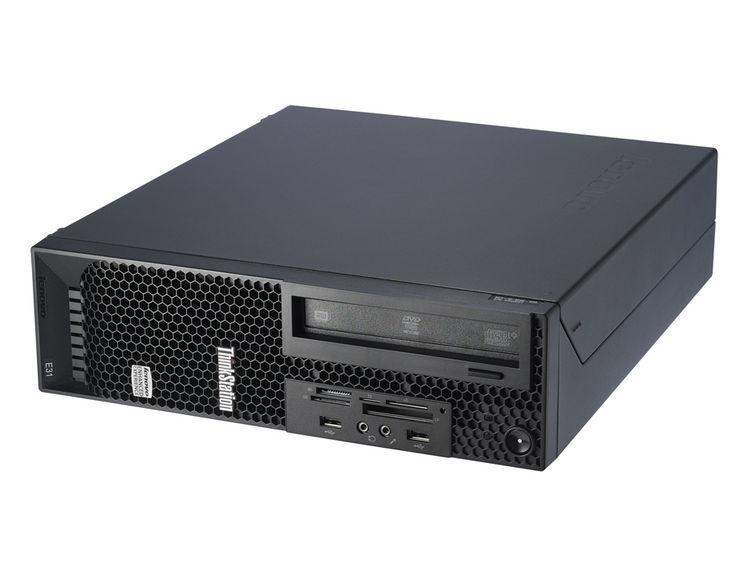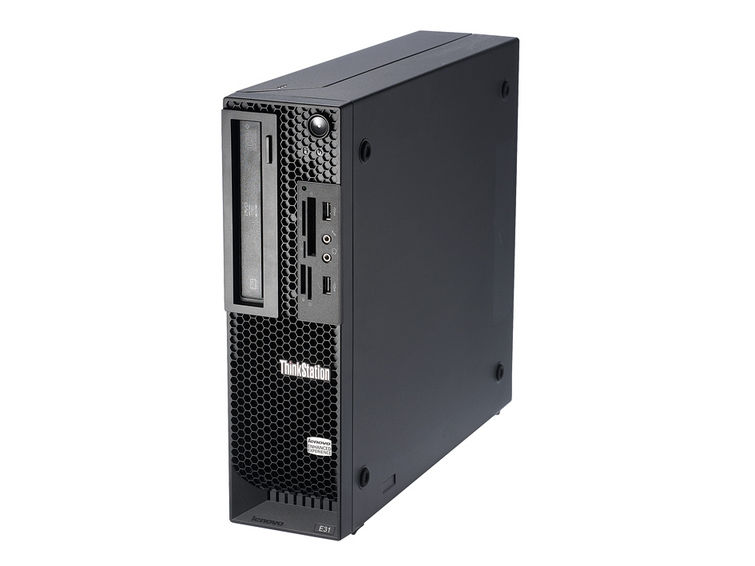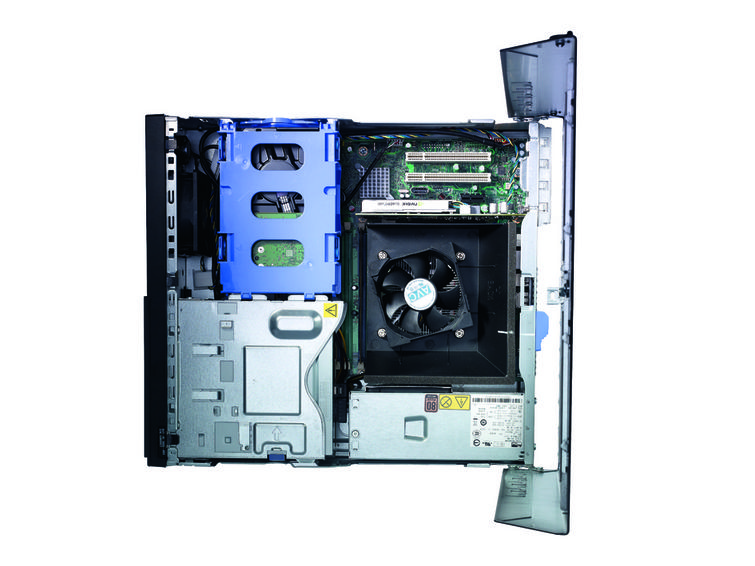Lenovo ThinkStation E31 review
Lenovo has squeezed the high-end Xeon processors and NVIDIA Quadro 600 graphics into a small-form-factor workstation. It makes for a powerful, but noisy machine.
Lenovo’s system isn’t particularly quiet but, aside from this, it doesn’t do much wrong: plenty of application power, a decent discrete graphics card, reasonable versatility and plenty of component options. No small form-factor workstation comes cheap but, if you’re after a machine like this, the Lenovo is a great choice.


Lenovo ThinkStation E31

Lenovo ThinkStation E31 - Standing

Lenovo ThinkStation E31 - Open

Dozens of companies produce what purport to be business PCs, but only the biggest firms have the clout and ability to design bespoke systems that cater to the corporate world.
Lenovo is one of the big players and its latest system, the ThinkStation E31, aims to maintain the firm's high standards, but does it succeed?
Small and intricately formed
This particular ThinkStation E31 is a small-form-factor model, and much like the last Lenovo workstation which we impressed us the ThinkCentre M90. It's designed in much the same way: press a spring-loaded clip on the rear of the system and the lift lids up to reveal the guts of this diminutive machine.
Lenovo has done well to fit so much practicality into the E31. The processor and motherboard are hidden behind a plastic shroud, the optical drive is held inside a metal cage that handily tilts up to a 90 degree angle, and the hard disk is stored in a purple plastic caddy that can be used without tools.

The E31 is easily accessible which makes servicing and upgrading easy
It makes accessing the variety of components relatively simple. The plastic shroud above the motherboard can be removed with four screws and, when it's pulled out of the way, the LGA 1155 processor socket, four memory slots with two vacant and a pair of empty PCI sockets are laid bare. The motherboard has a PCI-Express x1 slot free, too, although its PCI-Express x16 slot is occupied.
The optical drive's cage lifts up with the removal of a single clip, and the hard disk cage is similarly simple to use pull a tab at the end and it moves up on a couple of hinges. Two smaller tabs can be pulled to allow for hard disk removal, and hard disks are held in place on metal pins rather than screws that require tools.
Sign up today and you will receive a free copy of our Future Focus 2025 report - the leading guidance on AI, cybersecurity and other IT challenges as per 700+ senior executives
Mike Jennings has worked as a technology journalist for more than a decade and has been fascinated by computers since childhood, when he spent far too long building terrible websites. He loves desktop PCs, components, laptops and anything to do with the latest hardware.
Mike worked as a staff writer at PC Pro magazine in London for seven years, and during that time wrote for a variety of other tech titles, including Custom PC, Micro Mart and Computer Shopper. Since 2013, he’s been a freelance tech writer, and writes regularly for titles like Wired, TechRadar, Stuff, TechSpot, IT Pro, TrustedReviews and TechAdvisor. He still loves tech and covers everything from the latest business hardware and software to high-end gaming gear, and you’ll find him on plenty of sites writing reviews, features and guides on a vast range of topics.
You can email Mike at mike@mike-jennings.net, or find him on Twitter at @mikejjennings
-
 ‘1 engineer, 1 month, 1 million lines of code’: Microsoft wants to replace C and C++ code with Rust by 2030 – but a senior engineer insists the company has no plans on using AI to rewrite Windows source code
‘1 engineer, 1 month, 1 million lines of code’: Microsoft wants to replace C and C++ code with Rust by 2030 – but a senior engineer insists the company has no plans on using AI to rewrite Windows source codeNews Windows won’t be rewritten in Rust using AI, according to a senior Microsoft engineer, but the company still has bold plans for embracing the popular programming language
By Ross Kelly Published
-
 Google drops $4.75bn on data center and energy firm Intersect
Google drops $4.75bn on data center and energy firm IntersectNews The investment marks the latest move from Google to boost its infrastructure sustainability credentials
By Nicole Kobie Published
-
 OpenAI says prompt injection attacks are a serious threat for AI browsers – and it’s a problem that’s ‘unlikely to ever be fully solved'
OpenAI says prompt injection attacks are a serious threat for AI browsers – and it’s a problem that’s ‘unlikely to ever be fully solved'News OpenAI details efforts to protect ChatGPT Atlas against prompt injection attacks
By Nicole Kobie Published
